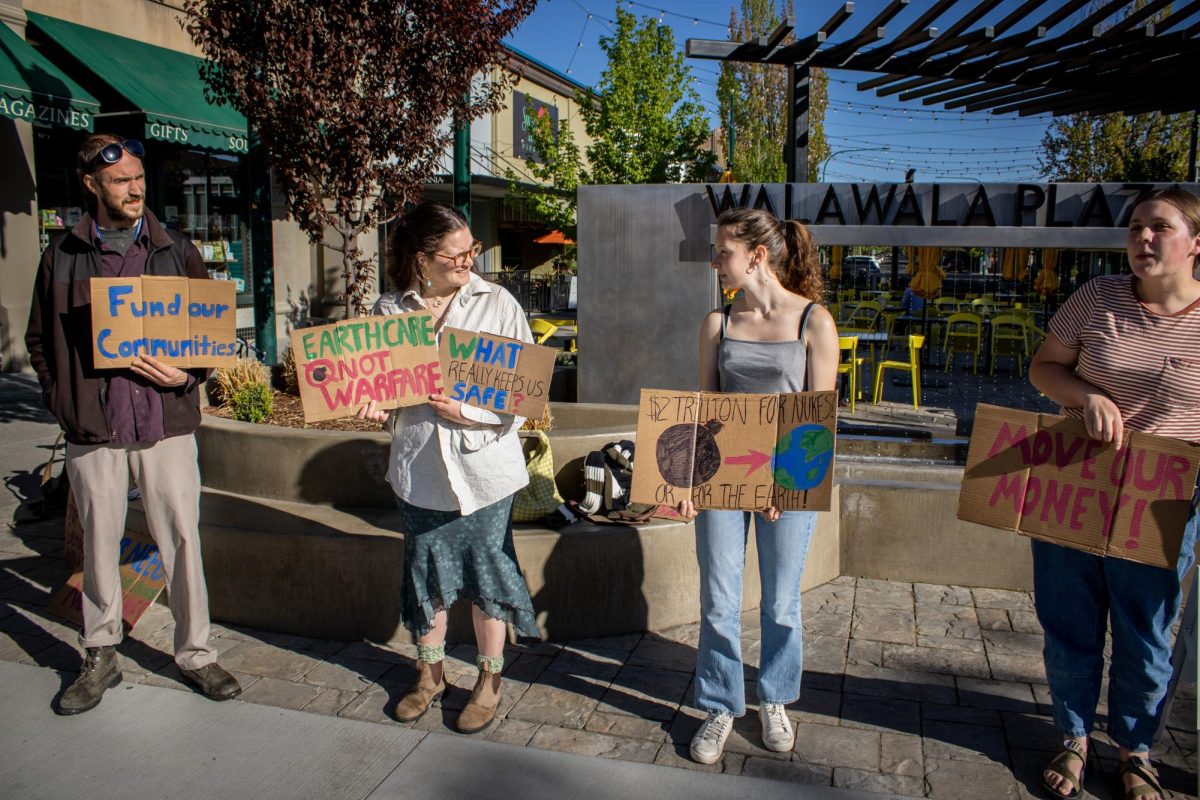At Green Park Elementary, having a strong bilingual program is mandatory. With 50 percent of its students learning English as a second language, the school works hard to prevent its high-risk native Spanish speakers from falling behind academically. The school’s efforts to integrate native Spanish speakers are immediately apparent; a sign hangs over the door bidding welcome in both Spanish and English, and several of the secretaries are native Spanish speakers.
Most impressive, however, is the school’s extensive bilingual program. Called the “Sheltered Model,” it is a program used by many of the elementary schools in the Walla Walla school district, including Blue Ridge and Prospect Point.
The goal of the “Sheltered Model,” as described by the Walla Walla Public Schools Elementary Handbook, is to teach students English gradually while continuing to help them grow in the acquisition of their native language. Thus, rather than being thrown into English speaking classes, native Spanish speakers take Spanish speaking classes up until the third grade. During these classes, English is gradually increased until they are put into regular English speaking classes at the fourth grade level.
According to Mike Lambert, Green Park’s principal, the “Sheltered Model” is ideal for preventing native Spanish speakers from falling behind academically. “Our native Spanish speakers walk into Green Park as some of our most at-risk students,” said Lambert. “When they walk out of our school, they are some of are most advantaged students. Since they know two languages, they gain the upper-hand.”
Proof of the “Sheltered Model’s” effectiveness for teaching academics can be seen in the WASL (Washington Assessment of Student Learning) exam scores of non-native English speakers at Green Park. Despite taking the exam in English, Spanish speakers at Green Park typically score equal to English speakers on the reading portion of the exam.
The downside to the “Sheltered Model” is the lack of interaction it promotes between native and non-native English speakers. Since the students are separated into different classrooms until the fourth grade, they do not get to know each other as friends and are often, as Green Park Spanish teacher Mrs. Hobbs said, “seen playing in separate groups on the playground.” In order to combat this, Green Park has started focusing on getting native and non-native English speakers to spend more time together in academic environments.
“We have started integrating all of their pull-out classes. P.E., music and library are all done with both native and non-native English speakers together,” stated Lambert.
This has helped tremendously in persuading non-native and native English speakers to play together on the playground. According to Hobbs, however, “it is still not enough.”
Hobbs believes a better model for social interaction is the “Two-Way Language Enrichment Program” used by Sharpstein Elementary. At Sharpstein Elementary, all native and non-native English speakers are put into the same classrooms where English and Spanish are taught in equal parts throughout the day. This, according to Mrs. Hobbs, promotes more interaction between native and non-native speakers: “Since they are in the same classes together, they work together and become friends.”
“But,” said Lambert, “the Two-Way Language Enrichment Program does not do as well academically. Non-native English speakers at Sharpstein don’t score as high on the WASL as Green Park’s non-native English speakers.”
In the end, both models have their strengths and their weaknesses.
“You’re never going to have it perfect,” said Lambert. “All you can do is make the situation as ideal as possible.”





